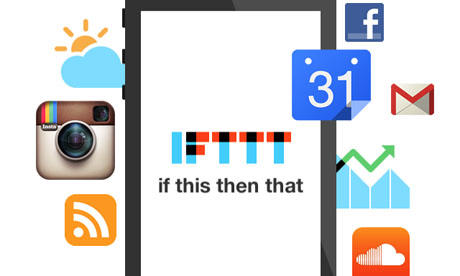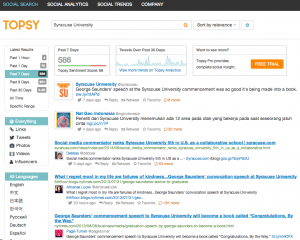Editor’s Note: The Big Data Roundup is a weekly feature that highlights the most compelling big data stories from around the web.
Foursquare is a Quiet Force
Dennis Crowley, one of Syracuse University’s most talked about alums over the past few years, is the founder and CEO of Foursquare, a location-based social network. Launched in 2009, the company employs more than 150 people in their New York City and San Francisco offices. I
In a profile of Crowley and Foursquare in the latest issue of Fast Company, it was revealed that his company may be a step closer to finding its stride. Just a year ago Foursquare’s rate of growth was beginning to slow and venture capital investors saw less promise in the company.
How is Foursquare gathering momentum now?
By emphasizing checkins less and redefining itself as a social discovery engine. The company envisions its future as one that will help consumers find where they want go and decide what they want to do based on the circumstance of their search. If someone opens the Foursquare app at 1:30am on Saturday they are not likely to be seeking out a pet shop but rather (potentially) a pizza place. These types of insights will allow Foursquare to become more than just a platform that lists local attractions but instead suggests places based on your interests, among other indicators.
In addition, if you have seen that iconic blue gear seal pasted on various smartphone app search functions then you have discovered Foursquare’s other weapon, location power.

From Foursquare.com
Applications such as Path, Instagram, and Vine are using Foursquare’s location engine to power location tagging options. This type of integration into big name apps has made the Foursquare service indispensable especially as Microsoft, Apple and Google monopolize many location based functions.
Topsy and The Twitter “Firehose”
Topsy is one of only four applications that Twitter gave permission to resell the “firehose” master stream. Topsy is a type of social search engine that enables enterprises and individuals to drill down and discover hashtag trends that can help businesses better optimize their web presence or social actions.
Currently, Topsy works with brand marketers and news publications to gather substantive insights into how natural and sponsored hashtag campaigns progress in the twittersphere. The open Twitter API has led to monumental data predictions for political campaigns and trends thanks to tools like Topsy. The Twindex which debuted during the past presidential election helped peg the nation’s sentiments about each candidate. Going forward, Topsy hopes to become the leader in trend interpretation within the Twitter ecosystem
NYT Releases Data to IFTTT
The New York Times is now the latest partner of the hit website If This Then That (IFTTT). The simplistic website allows powerful statements to be created with triggers and actions “If This Then That”. This week the New York Times allowed their assets to become part of the website. Users can prompt text message alerts when a new article is published in a particular section or save an article to Dropbox when a search finds a new article on the New York Times website.

From the Guardian.com
This small gesture by the New York Times is actually a big win for data buffs. It was fairly recently that Instagram no longer natively appeared on the Twitter feed. In addition, Twitter ceased its compatibility with RSS feeds. Facebook, Microsoft and other tech companies are also purveyors of this type of data hoarding mainly because they feel these tactics benefit their respective bottom-lines. IFTTT shows that when data is given freedom to be tied together creatively it benefits the user experience and usefulness of all corporate participants.
What were your favorite big data stories of the week? Share in the comments.


